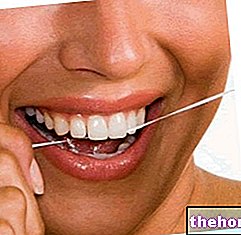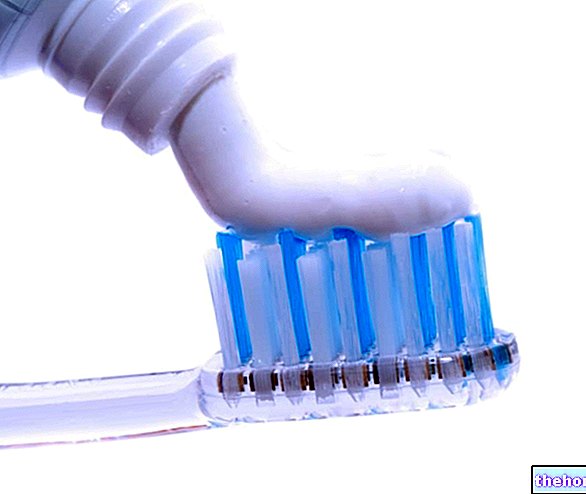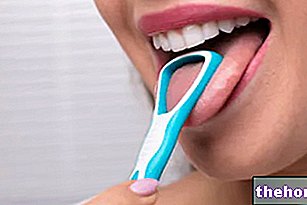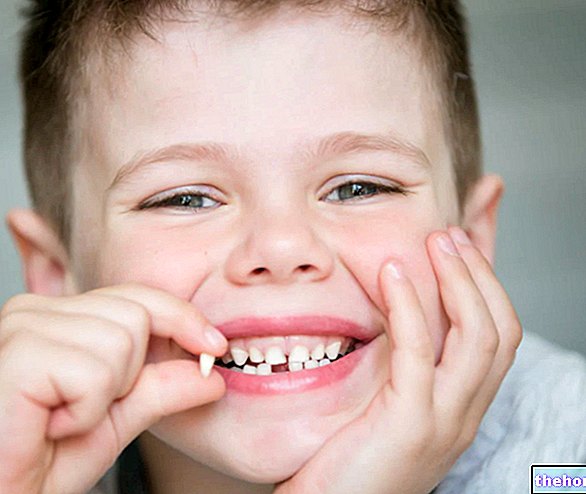Tooth formation
The teething of the newborn (or deciduous) is a very important stage in the growth and evolutionary development of the infant. The natural process of tooth formation in the newborn, called teething, can be described in several steps:
The milk teeth are divided as follows for each dental half-arch:
- 2 incisors (1 central + 1 lateral)
- 1 canine
- 2 molars (called "first" and "second" molars respectively)
Premolars and wisdom teeth are absent in the milk dentition
- Vertical growth of pre-formed teeth (during embryonic life)
- Eruption of the first teeth (milk teeth)
- Definitive arrest of the growth of the teeth
- Fall of milk teeth (starting around 2 years of age)
- Exchange of the deciduous dentition with the permanent one
Deciduous and permanent dentition
That of the newborn is also called "first dentition" to distinguish it from the permanent dentition of the adult. Although they are already included and partially calcified in the maxillary bones, deciduous teeth tend to appear only a few months after birth. In fact, deciduous dentition originates already during intrauterine life, usually around the seventh week of pregnancy (to end at the age of 20-24 months).
After birth, the teeth gradually erupt through the gums and tend to erupt around the sixth month of life. Normally, the first milk teeth to erupt are the two lower central incisors; the other teeth follow gradually according to a fairly defined chronology, even if the dentition of each newborn is a unique case. Just think, for example, that some babies are already born with a tooth (usually a lower incisor), while others have to wait up to 7-8 months for a baby tooth to appear.
Chronology
6th-8th month → the baby's teeth begin with the lower median incisors
7th-9th month → the upper median incisors erupt
8th-9th month → the lateral upper incisors emerge
10th-12th month → the lower lateral incisors cut the gum
12th-18th month → the first molars are born
18th-24th month → the canines erupt
24th-30th month → the baby's teeth are enriched with second molars
Regarding the chronology of the dentition in the newborn, there is a "wide individual variability that is not necessarily synonymous with abnormality. As we have seen, in fact, the teeth of the newborn can become evident at birth or appear only at the 7th-8th month Furthermore, the definitive arrest of the infant's teething can be completed around 20 months, or be delayed up to 2 and a half years, with the appearance of the second molars.
Within these time limits, the period of appearance of the deciduous dentition is however normal. At the completion of the first year of life, the child can exhibit a set of 6 or 8 teeth, depending on whether they are missing or have already erupted. ) the two lower lateral incisors.The canines enter the scene between the 18th and 24th months, and lastly, the molars.
Generally speaking, teething follows a relatively precise chronology: in other words, the order of appearance of the milk teeth tends to follow a rather regular pattern.
Therefore, we should not be alarmed if, at the end of the second year of life, the second molars have not yet erupted from the gums. The disorder of the eruption of milk teeth, as well as the delay, must however be reported to your pediatrician, who will evaluate each individual case.
Symptoms
The neonatal dentition accompanies the baby in its growth. It is normal that the eruption of the first teeth can cause some discomfort to the little one who, unable to express himself with words, manifests his discomfort with crying and tantrums. The gums, swollen and inflamed, are a reason for discomfort and itching : the baby, in fact, tends to bite precisely because of the teeth that are hitting the gum to come out. The neonatal dentition also stimulates the production of saliva: not surprisingly, during this phase, the baby tends to drool much more abundantly .
Remember that neonatal dentition is a difficult and delicate phase for the baby; therefore, it is recommended to be particularly available and patient towards the little one.
Did you know that ..
Although it is a fact that a significant rise in basal temperature corresponds precisely to the moment of eruption of the milk teeth, there is no scientific evidence that demonstrates the actual correlation. The same goes for the formation of skin rash, bronchitis and convulsions.
Completion of deciduous dentition
At the age of 6, the child proudly exhibits all 20 milk teeth. The deciduous dentition has come to an end, but will soon be gradually renewed with permanent dentition. The milk teeth, in fact, are intended for fall: the exchange of the teeth - or the replacement of milk teeth with permanent ones - is a physiological phenomenon that continues up to 12-13 years, an age in which all milk teeth have fallen out and many permanent teeth have already been replaced. The beginning of the definitive dentition corresponds to the moment of the eruption of the first permanent molar; subsequently, all the other "mature" teeth also sprout with an order that generally follows that in which the corresponding milk teeth arose. Permanent dentition ends around the age of 18-25, with the eruption of third molars (or wisdom teeth).
Other articles on "Teething of the newborn (or deciduous dentition)"
- Milk teeth
- Caring for baby teeth
- Caries of milk teeth
- Fall of the Milk Teeth




























